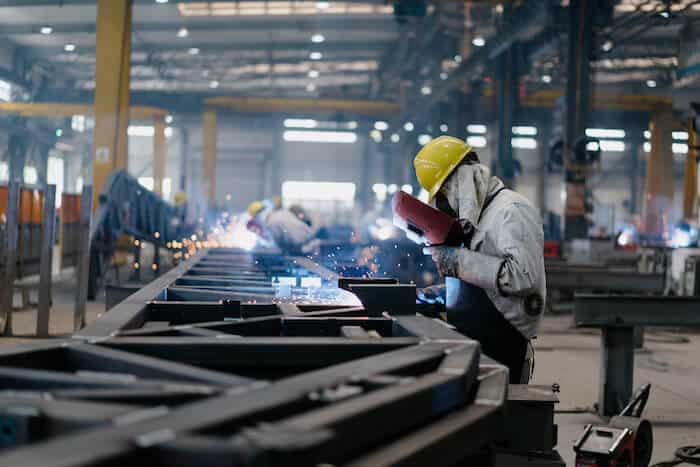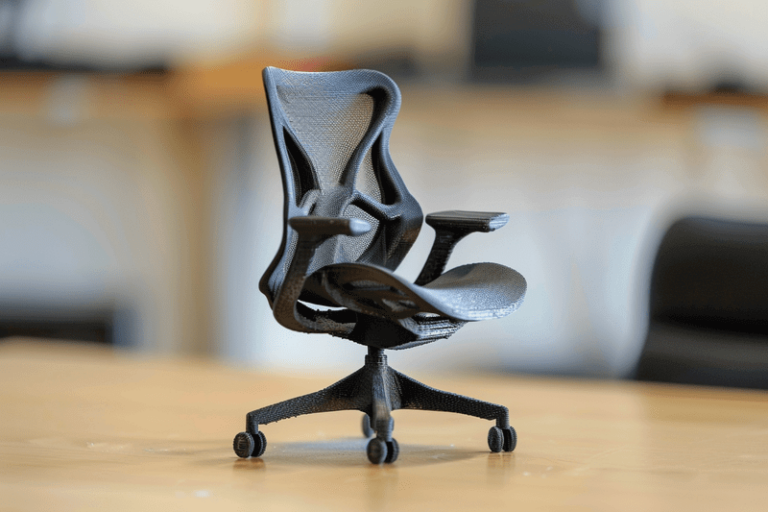The key to successfully manufacturing a new product is to plan the scope of the project. If you haven’t created a physical product before, it can be overwhelming to know where to start on your idea.
The first time you manufacture a product, every step in the production process is new. Once you have the hang of it, the manufacturing process—which can be a complex process—becomes easier to understand and anticipate, and you’re able to manufacture high-quality products more efficiently.
This article will help you plan and visualize all the stages you need to complete to get from your business idea all the way to making your first sale.
Step 1: Plan The Scope For Manufacturing Your Product

A common hurdle for many new entrepreneurs is understanding how to manufacture a product and sell it for the first time. Ideas are intangible. The real path of an entrepreneur is to go through the product development process and transform that idea into a physical product — one that you can manufacture and sell online.
Look around you right now. Every single physical product you see was at one point a concept or idea brought to fruition. The curve on your office chair, the high-quality materials of your desk, and the funky lamp in your living room were all concepts brought to life through manufacturing.
Mapping out the scope of your project will increase your odds of success. Plan out all the stages we cover here into a series of actionable steps with detailed specifications. Those who try to wing it are those ideas that are never finished.
In the beginning stages, it’s easy to have enthusiasm and excitement for the idea. You have a great idea and you’re hoping to change the world or get rich (or both). But it’s important to realize some of the capital costs and difficult stages that follow.
It requires energy and intensity to get through those difficult moments. Manufacturing a physical product is not an easy path to quick cash. Those who persist will win. You will have negotiations, setbacks, and challenges in your future when you try to manufacture your own product. But it’s worth it.
So what’s next?
Step 2: Research Your Product Before You Manufacture It
Market research is about discovering potential new product ideas and evaluating them. It’s a critical step that shouldn’t be overlooked. You must be willing to toss aside good ideas that have too much competition or too little innovation. The path to manufacturing your own product is difficult enough without spending time and money on a subpar option.
Before you rush into production, here are some questions to ask to make sure you’re building the right product with the right components:
- Who will be the target audience?
- Is it useful? Does it fill a need in the marketplace?
- Is it desirable? Do people want it?
- Does it solve a problem?
- Is it trending?
- Are there enough people searching for it?
- Is there a viable profit margin?
- Does it have a gap in the competition?
- Is it marketable?
Some products are hard to market, while others have an obvious target market. This can sometimes be a good indicator that you can move forward with a certain product idea.
There are several tools that can help you gauge the profitability and market potential of your idea. In the full development process, the research can also be outsourced to a specialist who has experience in the area of evaluating physical product ideas.
Learn more about this phase with our comprehensive guide to product research.
Once you have a suitable product business plan, it’s time to design and build your prototype.
Step 3: Create a Manufacturing Prototype
Before you contact potential manufacturers in China, Mexico, the U.S., or elsewhere, you will need to create your prototype. This is a stage that can derail many great ideas.

So, how do you go about creating a manufacturing prototype?
The first step is to determine what you want to build.
If the product is not yet complete, then it is important to know exactly what needs to be built before proceeding with any product design work. The more meticulous your planning, the better. Every small detail should be considered. For example, are you going to have screws accessible? Which shade of blue do you want? How much space between the lid and the lettering? No detail should be overlooked.
Once you find the right raw material that works with your product, you can start drawing a basic sketch of the final product. In order to be effective, the product design sketch should include all of the parts needed to assemble the product. This can be overwhelming for many people who are trying to manufacture a product and sell it for the first time.
One tip is that you can consider outsourcing the product prototype design — which is often created in CAD (computer-aided design) by professionals.
Gembah has a marketplace of vetted design professionals who can help create your prototype to your exact specifications — including the materials for each section.
Next, you should begin designing each part of the product individually.
When designing individual components, keep in mind that they should be designed according to their intended function. For example, if you are designing a lamp, you should consider its shape, size, and other features such as holes and grooves. After completing the individual component designs, you should combine them into a single assembly diagram.
Finally, you should test the assembled product to ensure that it functions properly.
Moving from the conception of a product to a completed prototype is an important yet expensive step. You’re ordering a single unit or a small minimum order quantity (MOQ) versus having the product manufactured in bulk.
Do not try to skip this step, as it’s important to evaluate the feel and function of the completed product before scaling.
You may find that some adjustments should be made and another prototype should be created — it’s best practice to aim to create an excellent product and avoid cutting corners.
Step 4: Find A Production & Manufacturing Partner
Many successful products can be sourced from sampling and you may not need to get into manufacturing your first product. But if you do need to create something substantially new, how do you know which manufacturing company will be best suited for your product prototype?
Before picking an overseas manufacturer at random, consider this:
There are many factors that go into choosing a manufacturer, including labor cost and availability. But what if you don’t have much experience with manufacturing? How can you tell how to find the right manufacturer for your prototype?
You may think that finding a good manufacturer is easy because there are several options available. In theory, potential manufacturers are everywhere—from domestic to overseas manufacturers. And even if this proves to be true, it doesn’t mean that you should just pick the first company that offers to make your product.
You should always look at more than price when selecting a manufacturer. After all, you’re looking for a true partner that will be able to turn raw materials into a finished product for you to sell.
It’s important to consider the following questions before making your decision:
- What is the quality of the materials used?
- What is the availability of the raw materials?
- What is the MOQ?
- Does the manufacturer have an established reputation?
- Is the company well-known in the industry?
- Are they willing to provide references from previous customers?
There is a vast difference between types of potential manufacturers. Some have high-minimum order quantity requirements, some will be more expensive, and some will be more reliable.
While there is a certain amount of risk moving forward, you can mitigate the chance of picking the wrong manufacturer when you create your product with a partner like Gembah that can help not only vet manufacturers, but have reputable manufacturers in the marketplace bid for your job.
This puts you, the creator, in the position of power at the negotiation table — which can improve your profit margins with better manufacturing costs.
Step 5: Go Time—How To Sell Your Product Online
This is when the production stages are complete and you start marketing and brand building for your online business — both of which are lengthy campaigns in and of themselves.
Before you reach this stage, plan out your marketing strategy. Like any project, begin with the end in mind. Before you start manufacturing a product to sell, you should have several marketing avenues already mapped out. You need to know from the outset how long it will take you to get the product to market and have the funding to bring the project to completion.
For your first product, you could start on Amazon FBA (Fulfilled by Amazon), where you ship your product to the Amazon warehouse and have Amazon sell and distribute your product for you. One of the perks of this route is that you leverage the immense traffic that Amazon already has for every type of product under the sun. If you want more control over the packaging, you could also consider Amazon FBM (Fulfilled by Merchant).
There are different strategies for listing your product on Amazon, but one thing for certain is that verified reviews and sale volume are two metrics to pay close attention to. Amazon ultimately wants to give the best experience to their customers, and ranking items on Amazon is more than just using a keyword frequently.
Alternatively, you could set up your own e-commerce store using Shopify or Big Commerce and have more control over your entire sales process. This allows you to do some strategic marketing like managing coupons and setting up abandoned cart sequences to maximize your profit potential. Once you’ve proven that your product sells in the marketplace, selling it from your own branded website can help your business enjoy higher profit margins.
View your marketing as dynamic. Continue to test different marketing channels to grow and scale your small business.
Getting to this stage is immensely rewarding, but your work is not done. As marketing evolves or new competitors enter the marketplace, you will need to adapt and scale to thrive. Consider making adjustments to your product to either improve the original product or create a similar product based on customer feedback. This allows you to stay ahead of your competition.
How To Manufacture A Product And Sell It? Partner With The Right People
As you can see, the process to get your idea into a fully marketable physical product is a long one — and it could be costly for business owners who make miscalculations or pick the wrong partners. You can increase your chances of completing a successful product by partnering with Gembah.
Reach out to our manufacturing experts at Gembah if you want to translate your vision into your first sale of your very own product. You’ll increase your odds of success significantly if you have the right team.



